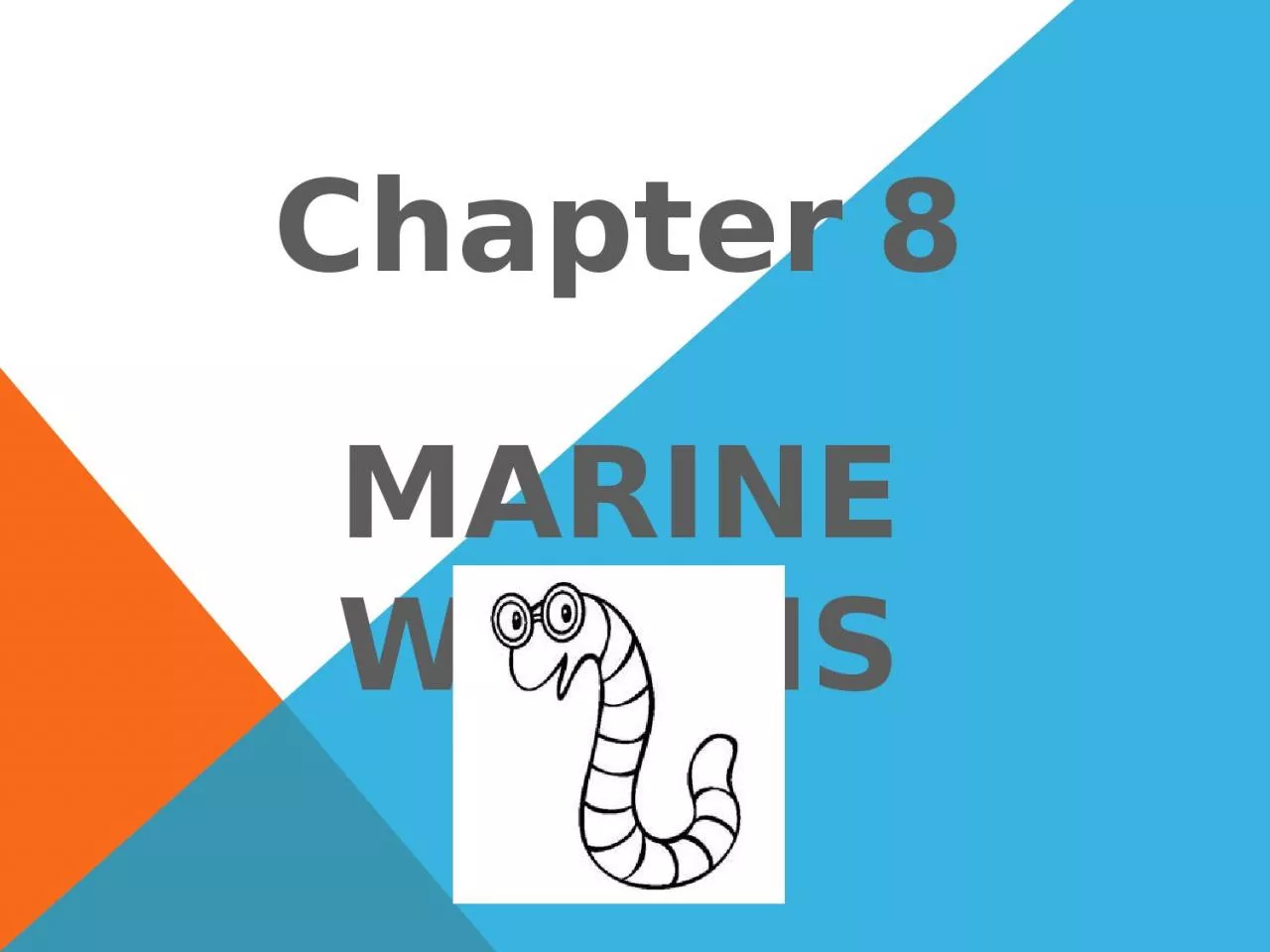

The worm you are most probably familiar with is THE EARTH WORM Where can worms be found Most worms can be found at the bottom of the water column near ocean sediment Some live closer to the surface ID: 929289
Download Presentation The PPT/PDF document "Chapter 8 MARINE WORMS" is the property of its rightful owner. Permission is granted to download and print the materials on this web site for personal, non-commercial use only, and to display it on your personal computer provided you do not modify the materials and that you retain all copyright notices contained in the materials. By downloading content from our website, you accept the terms of this agreement.
Slide1
Chapter 8MARINE WORMS
Slide2The worm you are most probably familiar with is……. THE EARTH WORM
Slide3Where can worms be found?Most worms can be found at the bottom of the water column, near ocean sediment.Some live closer to the surface.
Slide4FLATWORMSPhlya=Platyhelminthes (flatworms)Have flat-body formSize ranges from microscopic to up to 20 meters.10,000 SpeciesPlanarian & Tape worm
Slide5PLANARIANsFeeds on small organisms and debris.Two-way digestive tractHas Bilateral symmetryCapable of sexual and asexual reproduction.Has two eyespots that responds to light.Can break its body in two and each ½ regenerates.
Slide6Tape worms and FLUKESThese worms are PARASITES.Tapeworms can be found in the intestines of fish and other animals.They can be 18 meters in lengthFlukes live in the bodies of their hostsCan be eaten in raw fishLarvae cause what is called” Swimmers Itch”
Slide7Ribbon wormsLargest free-living worm1,000 SpeciesMore developed than flatworms- Circulatory and Digestive systemsLive in the intertidal zoneProboscis- speared extension inworms mouth that harpoons prey.Reproduces – sexually and asexually
Slide8SEGMENTED WORMSAnnelids- bodies are divided into compartments10,000 species
Slide9SandWorm- NEREISThese are found in the sediment of our tankOne- way digestive tractHas mouth hooks
Slide10Polychaeta= many bristlesParapodia- paddle-like appendagesSetae-Hair –like bristles
Slide11Nereis has eye spots thatDetect light stimuli.Oxygen is obtained throughDiffusion . Oxygen diffusesFrom the water into the body.They have a closed circulatory system that consists of a dorsal blood vessel, veins, arteries and capillaries.Reproduces sexually. They are not hermaphrodites like earthworms.
Slide12BLOOD WORMSUnlike Nereis- they have an open circulatory system
Slide13FEATHER DUSTER WORMSTo avoid being eaten, they build a tube that they live in.They push out feathery gills to capture plankton, obtain oxygen and remove carbon dioxide
Slide14GIANT TUBE WORMSIn 1977, these worms werediscovered near the hot-watervents on the deep sea floor.They live in clusters and are 1-2m long. Live symbiotically with bacteria. Bacteria helps them obtain a food source.
Slide15ARROW WORMSThese worms are found nearthe oceans surface.Mostly drift in the plankton community.One way digestive tract.They are hermaphrodites.
Slide16CHRISTMAS TREE WORMS AND OTHERSCLICK TO SEE OTHER SPECIES OF WORMS
Slide17THE END!!!